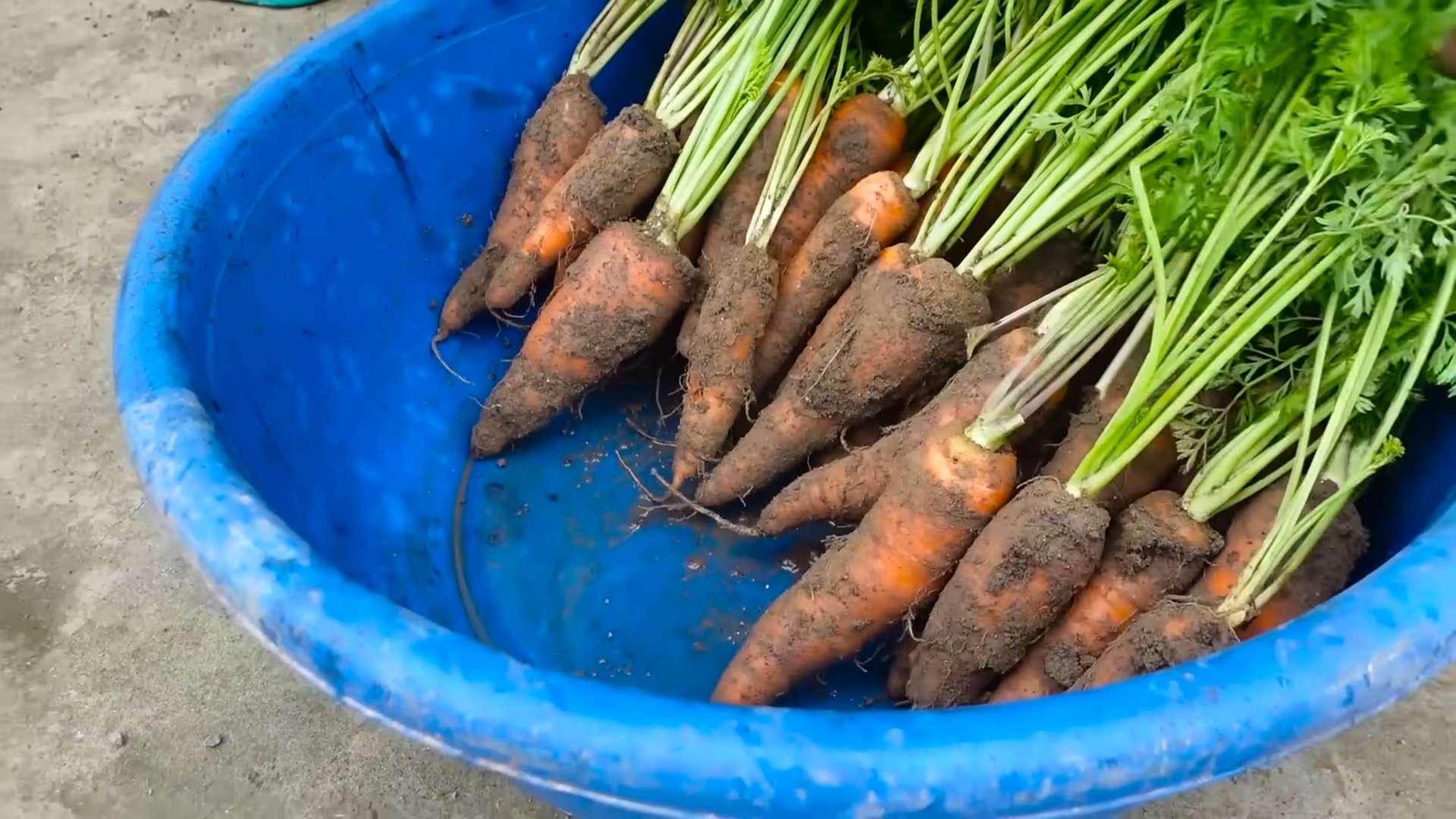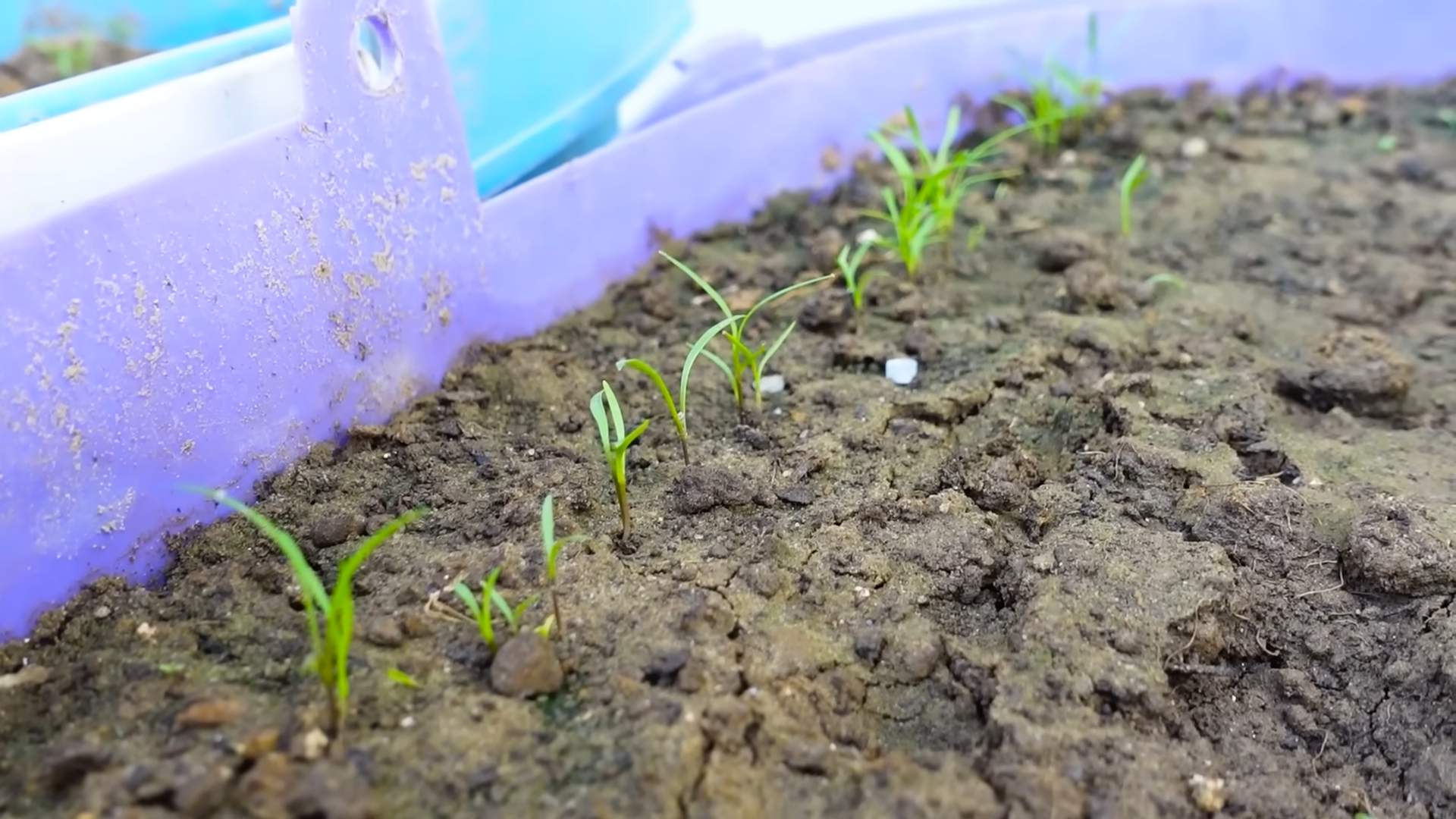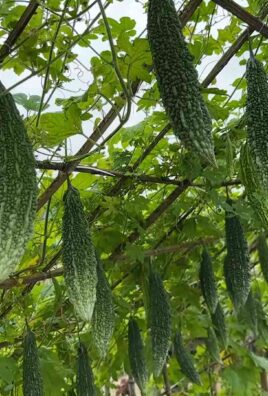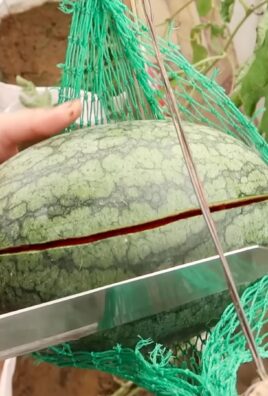Grow Kale in Bottles? Yes, you read that right! Forget sprawling garden beds and endless weeding. I’m about to show you a revolutionary way to cultivate this nutritional powerhouse, right in the comfort of your home, using recycled bottles.
For centuries, kale has been a staple in diets around the world, prized for its incredible health benefits and versatility in the kitchen. From ancient Roman times to modern-day superfood smoothies, kale has consistently proven its worth. But let’s be honest, traditional gardening can be intimidating, especially for beginners. That’s where this DIY trick comes in!
Imagine fresh, vibrant kale readily available just steps from your kitchen. No more trips to the grocery store or worrying about pesticides. This method of growing kale in bottles is not only incredibly space-saving, perfect for apartment dwellers or those with limited outdoor areas, but it’s also a fantastic way to recycle and reduce waste. Plus, it’s surprisingly easy! I’ll guide you through each step, from preparing your bottles to harvesting your first batch of delicious, homegrown kale. Get ready to unleash your inner urban farmer and discover the joy of fresh, homegrown greens with this simple and effective technique to grow kale in bottles.

Grow Kale in Bottles: A Fun and Space-Saving DIY Project
Hey there, fellow gardening enthusiasts! Are you short on space but still craving fresh, homegrown kale? Well, I’ve got the perfect solution for you: growing kale in bottles! It’s a super fun, eco-friendly, and surprisingly productive way to get your leafy green fix. Plus, it looks pretty darn cool. Let’s dive in!
What You’ll Need
Before we get our hands dirty, let’s gather our supplies. Here’s what you’ll need to successfully grow kale in bottles:
* Plastic Bottles: The star of the show! I recommend using 2-liter soda bottles or larger water bottles. The bigger, the better, as it gives the kale more room to grow. Make sure they’re clean and dry.
* Kale Seeds or Seedlings: You can start from seeds or buy small kale seedlings from your local nursery. I personally prefer starting from seeds, as it’s more rewarding to watch them sprout and grow.
* Potting Mix: Use a good quality potting mix that drains well. Avoid using garden soil, as it can become compacted in the bottles.
* Scissors or a Utility Knife: For cutting the bottles. Be careful!
* Drill or Nail and Hammer: To create drainage holes.
* Watering Can or Spray Bottle: For watering your kale.
* Optional: Twine or Rope: For hanging the bottles (if you want a vertical garden).
* Optional: Gravel or Small Stones: For drainage at the bottom of the bottle.
Preparing the Bottles
Okay, let’s get those bottles ready for their kale-growing duties! This is a crucial step, so pay close attention.
1. Clean the Bottles: Thoroughly wash the bottles with soap and water to remove any residue. Rinse them well and let them dry completely. This will prevent any unwanted mold or bacteria from affecting your kale.
2. Cut the Bottles: This is where the scissors or utility knife comes in. There are a few ways you can cut the bottles, depending on how you want to display them:
* Horizontal Cut: This is the simplest method. Cut the bottle horizontally, about two-thirds of the way up from the bottom. This creates a wide opening for planting. You can then hang the bottle horizontally using twine or rope.
* Vertical Cut: Cut the bottle vertically, from the top to about halfway down. This creates a “pocket” for planting. You can then lean the bottle against a wall or fence.
* Stacked Bottles: Cut the bottom off several bottles and stack them on top of each other, creating a tower. This is a great way to maximize space. You’ll need to secure the bottles together with glue or tape.
Safety First! Be extremely careful when using scissors or a utility knife. Always cut away from yourself and use a cutting board or other protective surface.
3. Create Drainage Holes: Drainage is essential for healthy kale growth. Use a drill or a nail and hammer to create several drainage holes in the bottom of the bottle. I usually make about 5-6 holes, spaced evenly apart.
4. Optional: Add Gravel: Adding a layer of gravel or small stones to the bottom of the bottle can improve drainage even further. This is especially helpful if you live in an area with heavy rainfall.
Planting the Kale
Now for the fun part: planting the kale!
1. Fill the Bottle with Potting Mix: Carefully fill the bottle with potting mix, leaving about an inch of space at the top. Gently press down on the soil to remove any air pockets.
2. Plant the Seeds or Seedlings:
* From Seeds: Sprinkle the kale seeds evenly over the surface of the soil. Cover them with a thin layer of potting mix (about ¼ inch). Gently water the soil.
* From Seedlings: Dig a small hole in the soil, large enough to accommodate the root ball of the seedling. Carefully remove the seedling from its container and place it in the hole. Gently fill the hole with potting mix and press down on the soil. Water the seedling thoroughly.
3. Water Thoroughly: After planting, water the kale thoroughly. Make sure the water drains out of the drainage holes.
Caring for Your Kale
Congratulations! You’ve successfully planted your kale in bottles. Now, let’s talk about how to keep it happy and healthy.
1. Sunlight: Kale needs at least 6 hours of sunlight per day. Place your bottles in a sunny location, such as a balcony, patio, or windowsill. If you don’t have enough natural sunlight, you can supplement with a grow light.
2. Watering: Water your kale regularly, especially during hot weather. The soil should be moist but not soggy. Check the soil moisture by sticking your finger into the soil. If the top inch of soil feels dry, it’s time to water.
3. Fertilizing: Kale is a heavy feeder, so it needs regular fertilization. Use a balanced liquid fertilizer, diluted to half strength. Fertilize every two weeks.
4. Pest Control: Keep an eye out for pests, such as aphids, cabbage worms, and slugs. If you spot any pests, you can remove them by hand or use an organic insecticide. I like to use neem oil, which is a natural and effective pest control solution.
5. Harvesting: You can start harvesting kale leaves when they are about 4-6 inches long. Simply cut off the outer leaves, leaving the inner leaves to continue growing. This will encourage the plant to produce more leaves.
Troubleshooting
Even with the best care, you might encounter some problems along the way. Here are some common issues and how to fix them:
* Yellowing Leaves: This could be a sign of overwatering, underwatering, or nutrient deficiency. Check the soil moisture and adjust your watering schedule accordingly. Fertilize your kale with a balanced fertilizer.
* Leggy Growth: This means your kale isn’t getting enough sunlight. Move your bottles to a sunnier location or supplement with a grow light.
* Pest Infestation: As mentioned earlier, keep an eye out for pests and take action immediately.
* Slow Growth: This could be due to poor soil, lack of nutrients, or insufficient sunlight. Make sure you’re using a good quality potting mix, fertilizing regularly, and providing enough sunlight.
Hanging Your Kale Bottles (Optional)
If you want to create a vertical kale garden, here’s how to hang your bottles:
1. Drill Holes: Drill two small holes on either side of the bottle, near the top.
2. Thread Twine or Rope: Thread twine or rope through the holes, creating a loop.
3. Hang the Bottles: Hang the bottles from a fence, balcony railing, or other sturdy structure. Make sure the bottles are securely attached and won’t fall.
Choosing the Right Kale Variety
There are many different varieties of kale to choose from, each with its own unique flavor and texture. Here are a few popular options:
* Curly Kale: This is the most common type of kale, with tightly curled leaves. It has a slightly bitter flavor.
* Lacinato Kale (Dinosaur Kale): This variety has long, dark green leaves with a bumpy texture. It has a milder, sweeter flavor than curly kale.
* Red Russian Kale: This kale has flat, fringed leaves with a reddish-purple hue. It has a slightly peppery flavor.
* Redbor Kale: This variety has deeply ruffled, purple leaves. It’s more ornamental than other types of kale, but it’s still edible.
I encourage you to experiment with different varieties to find your favorite!
Benefits of Growing Kale in Bottles
Besides being a fun and space-saving project, growing kale in bottles offers several other benefits:
* Fresh, Organic Kale: You’ll have access to fresh, organic kale right at your fingertips.
* Reduced Food Waste: You can harvest only what you need, reducing food waste.
* Eco-Friendly: You’re reusing plastic bottles, which helps reduce plastic waste.
* Educational: It’s a great way to learn about gardening and where your food comes from.
* Aesthetic Appeal: A vertical kale garden can add a touch of greenery to your balcony or patio.
So, what are you waiting for? Grab some bottles, seeds, and potting mix, and get started on your own kale-growing adventure! I promise, you won’t regret it. Happy gardening!

Conclusion
So, there you have it! Growing kale in bottles isn’t just a quirky gardening experiment; it’s a genuinely effective and rewarding way to cultivate fresh, nutritious greens, even if you’re short on space or dealing with less-than-ideal soil conditions. We’ve walked you through the process, from selecting the right bottles and preparing your growing medium to planting your kale seeds and providing the necessary care.
The beauty of this method lies in its simplicity and adaptability. It’s a fantastic project for beginners, a fun activity to do with kids, and a clever solution for experienced gardeners looking to maximize their yields in limited areas. Think about it: you’re repurposing materials, reducing waste, and creating a sustainable source of healthy food – all in one go!
But the benefits extend beyond mere convenience. Bottle gardening offers superior drainage, minimizing the risk of root rot, a common problem with traditional gardening methods. It also allows you to easily move your kale plants to chase the sun or shelter them from harsh weather. Plus, the elevated position can help deter pests like slugs and snails, which can wreak havoc on your precious greens.
Don’t be afraid to experiment with different varieties of kale. Curly kale, Lacinato kale (also known as dinosaur kale), and Red Russian kale all thrive in bottle gardens. You can even try growing other leafy greens like spinach or lettuce using the same technique. Consider adding companion plants like marigolds or basil to your bottle gardens to attract beneficial insects and further deter pests.
For those looking to take their bottle gardening to the next level, consider setting up a vertical garden by stacking or hanging your bottle planters. This not only maximizes space but also creates a visually stunning display. You can also explore different watering methods, such as using a self-watering system with a wick or a drip irrigation setup.
The key takeaway here is that growing kale in bottles is an accessible and rewarding way to enjoy fresh, homegrown produce, regardless of your gardening experience or available space. It’s a sustainable, space-saving, and surprisingly effective method that deserves a try.
We wholeheartedly encourage you to give this DIY trick a shot. It’s a fun, educational, and ultimately delicious experience. And once you’ve harvested your first batch of homegrown kale, don’t forget to share your success stories with us! We’d love to see your bottle gardens in action and hear about your favorite kale recipes. Post pictures and tips on social media using #BottleKale or tag us in your posts. Let’s build a community of bottle gardening enthusiasts and inspire others to embrace this innovative and sustainable way to grow their own food. So, grab some bottles, get your hands dirty, and start growing your own delicious and nutritious kale today!
Frequently Asked Questions (FAQ)
What kind of bottles are best for growing kale?
The ideal bottles are sturdy plastic bottles, such as those used for water, soda, or juice. Two-liter bottles are a good starting point, but larger bottles will provide more room for the kale roots to grow. Make sure the bottles are clean and free of any residue before using them. Avoid using bottles that have contained harmful chemicals. Clear or translucent bottles are preferable as they allow you to monitor the moisture level of the soil. You can also paint the bottles to protect the roots from direct sunlight, but leave a small area clear so you can still check the soil.
What type of soil should I use for growing kale in bottles?
A well-draining potting mix is essential for growing kale in bottles. Avoid using garden soil, as it can become compacted and doesn’t provide adequate drainage. A good mix would include equal parts of potting soil, compost, and perlite or vermiculite. The compost provides nutrients, while the perlite or vermiculite improves drainage and aeration. You can also add a slow-release fertilizer to the mix to provide a steady supply of nutrients to the kale plants.
How often should I water my kale plants in bottles?
The frequency of watering depends on the weather conditions and the type of soil you’re using. Generally, you should water your kale plants when the top inch of soil feels dry to the touch. Avoid overwatering, as this can lead to root rot. Ensure that the bottles have adequate drainage holes to prevent water from accumulating at the bottom. During hot and dry weather, you may need to water your plants more frequently. Check the soil moisture regularly and adjust your watering schedule accordingly.
How much sunlight do kale plants need in bottles?
Kale plants need at least 6 hours of sunlight per day to thrive. Place your bottle gardens in a sunny location where they will receive ample sunlight. If you live in a hot climate, you may need to provide some afternoon shade to prevent the leaves from scorching. You can also rotate the bottles regularly to ensure that all sides of the plants receive equal sunlight. If you don’t have access to enough natural sunlight, you can supplement with grow lights.
How do I fertilize my kale plants in bottles?
Kale plants are heavy feeders and require regular fertilization. You can use a balanced liquid fertilizer, such as a 10-10-10 or 20-20-20 formula, diluted to half strength. Fertilize your plants every two to three weeks during the growing season. You can also add compost tea or worm castings to the soil to provide additional nutrients. Avoid over-fertilizing, as this can lead to excessive leaf growth and reduced flavor.
How do I protect my kale plants from pests and diseases?
Bottle gardening can help deter some pests, but it’s still important to monitor your plants regularly for any signs of infestation or disease. Common pests that affect kale include aphids, cabbage worms, and flea beetles. You can control these pests by handpicking them off the plants, spraying with insecticidal soap, or using neem oil. Diseases that can affect kale include powdery mildew and black rot. To prevent these diseases, ensure good air circulation around the plants and avoid overwatering. Remove any infected leaves promptly to prevent the spread of disease.
When is the best time to harvest kale from bottle gardens?
You can start harvesting kale leaves when they are about 4-6 inches long. Harvest the outer leaves first, leaving the inner leaves to continue growing. This will allow you to harvest kale continuously throughout the growing season. Avoid harvesting more than one-third of the plant at a time, as this can stress the plant and reduce its yield. The best time to harvest kale is in the morning, after the dew has dried.
Can I grow kale in bottles indoors?
Yes, you can grow kale in bottles indoors, but you will need to provide adequate lighting. Place your bottle gardens near a sunny window or use grow lights to supplement the natural light. You will also need to ensure good air circulation to prevent diseases. Indoor kale plants may require more frequent watering than outdoor plants, as the air indoors is often drier.
How do I overwinter kale plants in bottles?
Kale is a cold-hardy plant and can tolerate light frosts. However, if you live in an area with harsh winters, you may need to protect your kale plants from freezing temperatures. You can move the bottles indoors or cover them with a frost blanket. You can also mulch around the base of the plants to insulate the roots. Even if the leaves die back during the winter, the plants may regrow in the spring.
What are some creative ways to display my kale bottle garden?
There are many creative ways to display your kale bottle garden. You can hang the bottles from a fence or railing, stack them on a pallet, or create a vertical garden using a trellis or wire mesh. You can also paint the bottles in different colors or decorate them with stencils or decals. Get creative and have fun with it! Your kale bottle garden can be both functional and aesthetically pleasing.



Leave a Comment